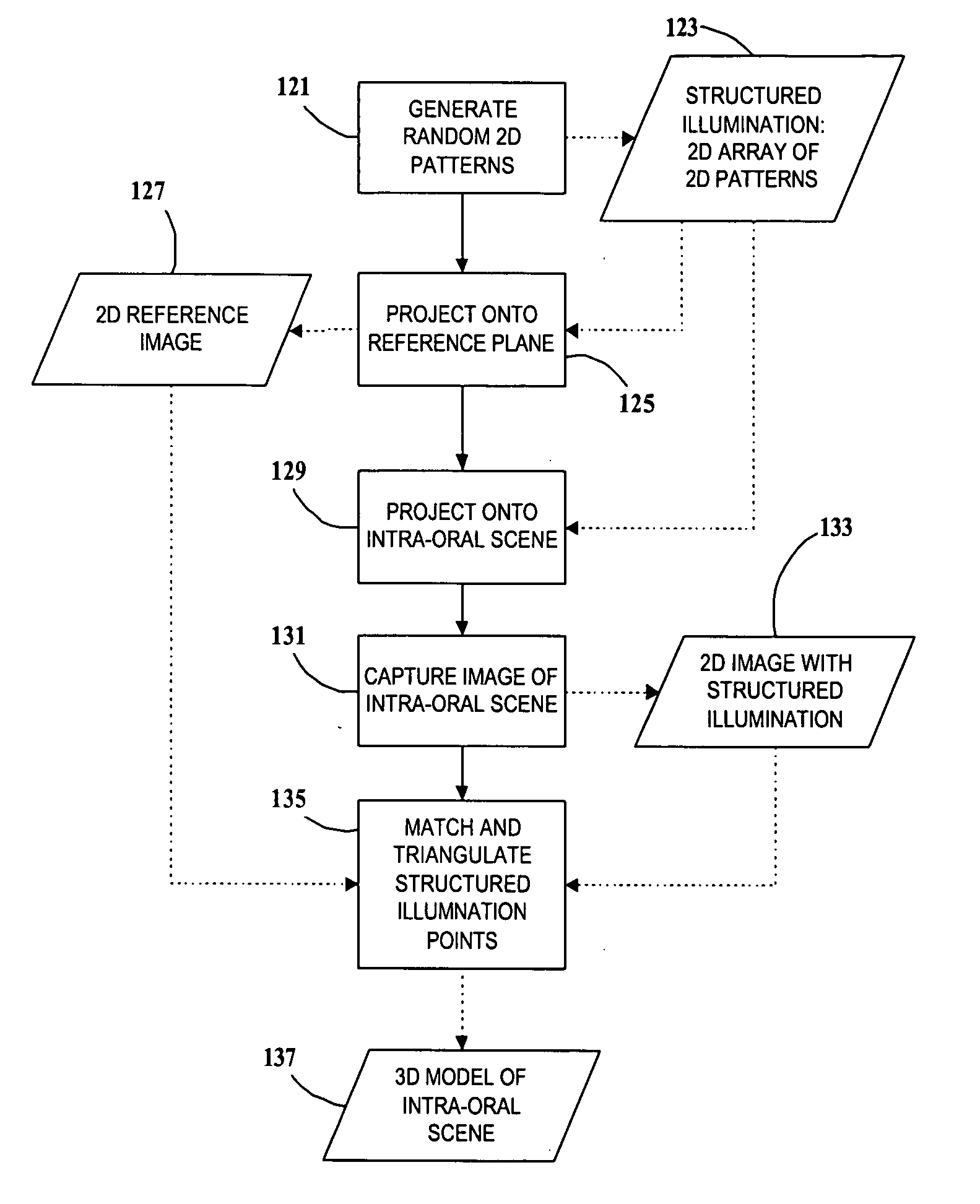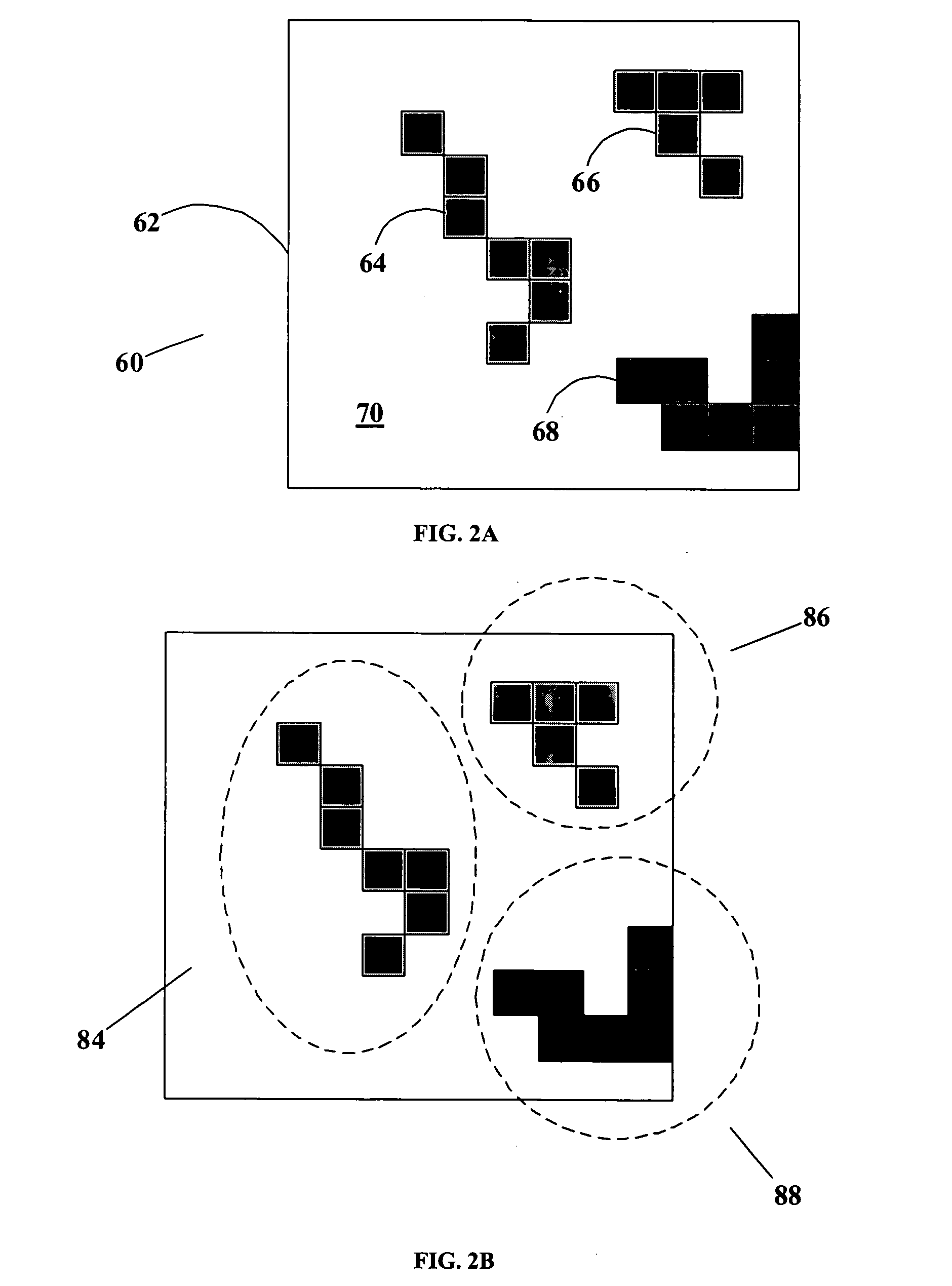Three-dimensional modeling of the oral cavity
- Summary
- Abstract
- Description
- Claims
- Application Information
AI Technical Summary
Benefits of technology
Problems solved by technology
Method used
Image
Examples
Embodiment Construction
[0038] The principles and operation of a method according to the present invention may be understood with reference to the drawings and the accompanying description.
[0039] In accordance with the present invention, structured illumination containing stored random patterns is used to convey surficial features to an intra-oral scene to be modeled in three dimensions by a single image, wherein triangulation is performed relative to a stored image of the structured illumination impinging from a different angle on a known surface, such as a plane. The method of the invention can be applied in various dental applications and fields, as well as be put to use in dental veterinary practice, and forensic dental medicine. In a preferred embodiment of the present invention, the light projected on the site of interest within the mouth bears randomly-structured and randomly-distributed patterns such that each projected pattern is probabilistically unique over the entire area onto which the light ...
PUM
 Login to View More
Login to View More Abstract
Description
Claims
Application Information
 Login to View More
Login to View More - R&D
- Intellectual Property
- Life Sciences
- Materials
- Tech Scout
- Unparalleled Data Quality
- Higher Quality Content
- 60% Fewer Hallucinations
Browse by: Latest US Patents, China's latest patents, Technical Efficacy Thesaurus, Application Domain, Technology Topic, Popular Technical Reports.
© 2025 PatSnap. All rights reserved.Legal|Privacy policy|Modern Slavery Act Transparency Statement|Sitemap|About US| Contact US: help@patsnap.com



